It was when we arrived at the bus station in the Bolivian border town of Villazon that it became obvious we would have to get used to less luxurious forms of travel from now
on. Our bus had no suspension or shocks, the seats were broken and on our journey we got covered from head to toe in dust on the bumpy gravel road. Thankfully it didn’t rain as it would have leaked like a sieve. Despite
all this it was probably the most fun journey we’ve had in South America, especially as at every stop along the way singers jumped on the bus trying to make a BOB or two, BOB being the abbreviation for the local currency the Boliviano.
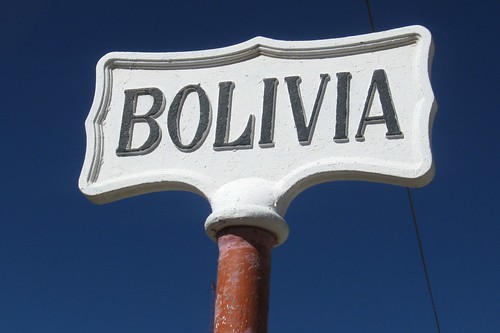
Tupiza
We arrived in Tupiza and it felt like we had gone back in time to the wild wild west, all that was missing were cowboys and tumbleweeds bouncing down the street. In fact if
you want to believe Hollywood and the local tourist industry, it was near here where Butch Cassidy and the Sundance Kid met their demise.
The most noticeable thing in Tupiza was the amount of people imitating hamsters. The chewing of coca has been an important Andean tradition for centuries and today you will
often see people with their cheeks stuffed with coca leaves which is said to help deal with the high altitude. Even without its derivative cocaine you can experience many highs in Bolivia, one off which is the...
Salar de Uyuni
The Salar de Uyuni is the largest salt flat in the world, created when the Andes formed, draining a sea of all it’s water and leaving the salt behind. We signed up for a
4 day jeep tour across the Bolivian altiplano from Tupiza to arrive at the Salar on the final day. Our group of four was completed by the crazy cats Jelte and Jojanneke from the land of Orange, cue sugar and butter on bread
for breakfast! (A very Dutch thing to do!)

Our journey took us through some fantastic scenery laced with high altitude. In fact, during our first week in Bolivia our average sleeping height was around 4000m above sea
level. Due to this and the tough climate that comes with it there was not much civilisation to see outside of the small villages we slept in.
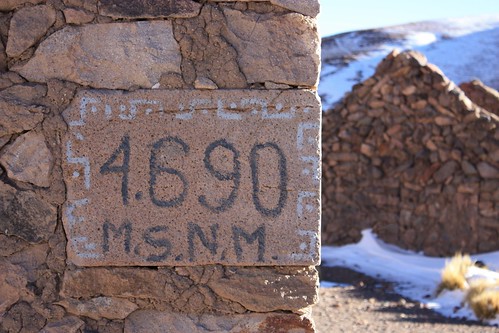
The adults we saw all looked so much older than they actually are due to the harsh climate and tough working conditions. The children, however, were as photogenic as always.
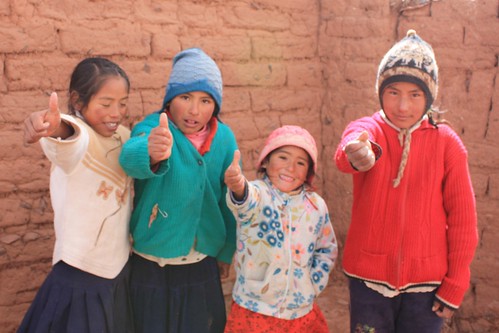
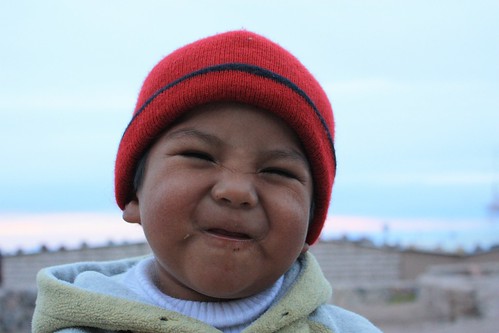
On our second day we arrived at the Reserva Nacional de Fauna Andina and were met by a wall of rubbish. Inside, huge lorries used the park as a highway to get to the salt and other minerals that they
were extracting from the lagunas within the national park, transporting it through to Chile. It appears the concept of National Parks as being areas designated for protection is somewhat lost on Bolivia. Despite these flaws
you can see why the area would be declared a wildlife reserve, with its beautiful scenery of volcanoes and mountains, Lake Colorado filled with Flamingos and the llamas and vicunas roaming freely throughout.

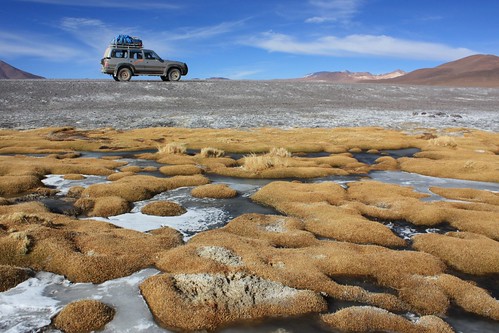

We spent our last night in a hotel made of salt next to the Salar
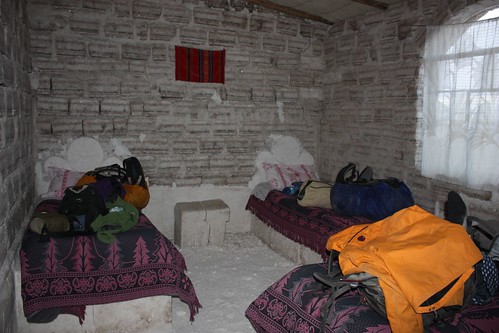
Before getting up early to catch sunrise on the salt flat.
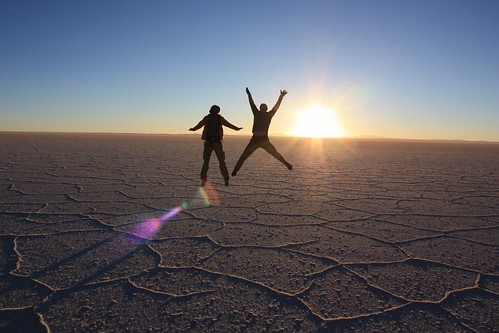
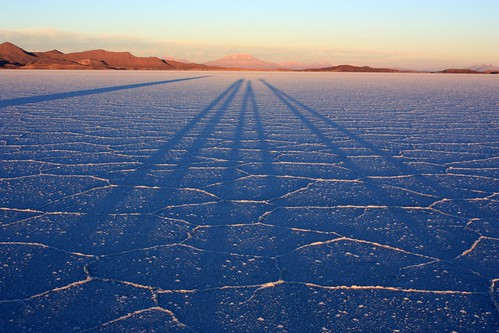
We had a spectacular day on the Salar, visiting Isla Incahuasi, a random Cactus covered island.

And taking perspective shots of the never ending crystal white salt. Note to oneself, if you see a crack in the salt don’t step near it as it may break and then you end
up shin deep in salt water, which will leave your shoe whiter than white with salt residue!
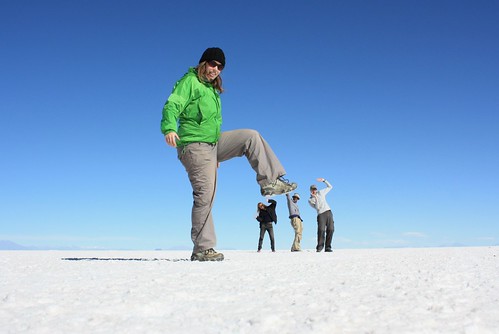
The Salar was the perfect way to end a great tour. We had heard some horror stories of drunk drivers taking tours out on the flats and jeeps breaking down all the time. Our
driver Javier had one beer on day 3 and even that was alcohol free, although that didn’t stop him driving us into a snow drift we had to be pushed out of! Christina, our personal cook, woke at 3am everyday to prepare our
breakfast and lunch and kept us well fed with a variety of delicious meals. We could have hired an English speaking guide but it wasn’t necessary as the scenery spoke for itself. However, if we weren’t high enough from
our trip, we were about to get much higher.
Potosi
Potosi was founded in 1545 due to ores found in Cerro Rico, which forms the cities backdrop and by the end of the 18th century it was one of the wealthiest and largest cities
in the world. The silver found within Cerro Rico is said to have underwritten the Spanish economy for two centuries. Today, the city’s claim to fame is as the worlds highest city at 4060m above sea level.

We arrived in time for the traditional annual Pachamama (Mother Earth) festival. In the city troupes, made up mainly of children, danced in the streets along to the music produced by a brass band that followed each group. It was an eclectic experience
with all the groups wearing different coloured traditional costumes.
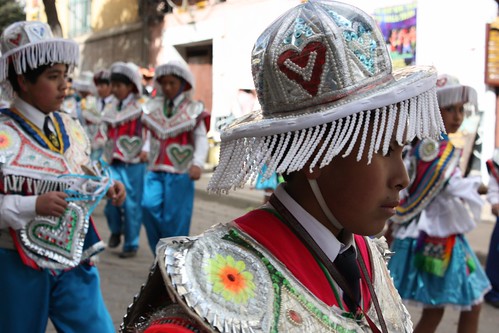
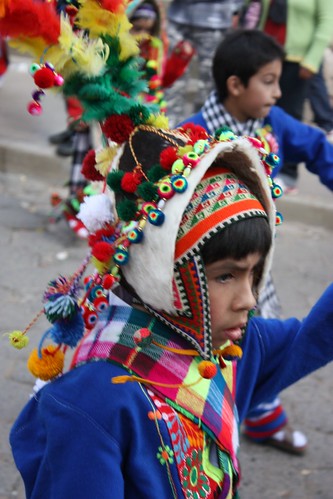

At Cerro Rico it is considered good luck to sacrifice a llama and bury its remains near the entrance to the mines as a way of winning the blessing and protection of Pachamama and to stop the devil spilling human blood within the mines. Sacrifice is an important element of all traditional Andean
festivals and special occasions and is still widely practised. It was
interesting to see a traditional ritual firsthand,
although we weren’t as keen to be smothered in llama blood and sprayed
with beer as some fellow travellers.

Whilst there we met Marvin, a 14 year old local who helped show us around. He was not old enough to drink beer yet as the legal age is 15, but he was already old enough to work in the mines.
It is estimated that 1000 children between the ages of 8 and 10 make up the 8000 people that today work in the mines and the life expectancy for a miner can be as little as 10 years from the day they start working. It’s
estimated that 8 million men have lost their lives in the history of the mine due to accidents, the lung disease silicosis and mercury poisoning from the extraction process.

Mine tour
Despite the dangers and the fact that all the valuable minerals were long ago extracted mining is still the main profession in Potosi. With the average wage in the city being
500 Bolivianos a month or the equivalent of US$70, in the mines they can make up to 50 Bolivianos a day. With Jo sitting this one out due to claustrophobia I signed myself up to find out more about the mines.
Our guide Efrain’s father took him out of school at 10 to start working in the mines. He has since learnt English and now works as a guide, meaning that he only spends a
couple of hours a day in the mines rather than the 24 hours that can be spent working in the hazardous conditions. Although in the low season when there are no tourists he again joins his family in the mines to make a living.
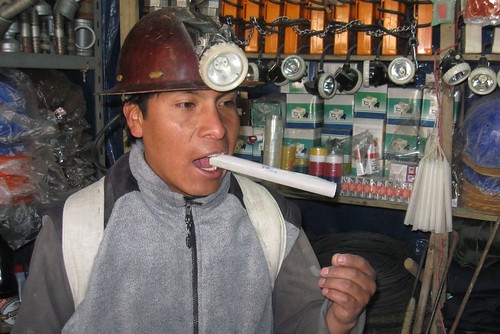
Our tour started by sexying ourselves up with our safety equipment before making our way to the miners market to buy equipment for the miners. For US$3 you could buy dynamite,
a fuse and accelerant. It was strange walking around the streets with dynamite and with no regulations i’m sure that I could have walked off with it if I had wanted. It certainly would have made our next border crossing
eventful :)
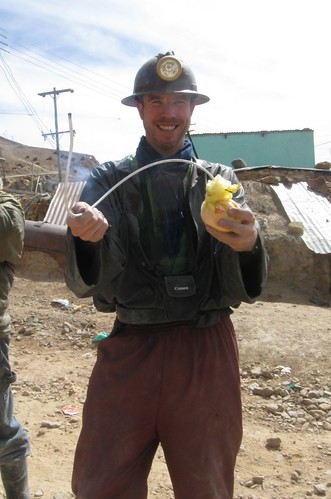
It was also suggested that we buy the miners some coca leaves. Because of the dust the miners do not eat anything when working, instead they chew coca leaves to suppress their
appetite.

When we arrived at the mines it was obvious that this wasn’t going to be a typical tour. Entering the tunnel the dust that fills the air burnt the back of my throat and
nose and continued to do so for every breath. Due to the size of the tunnels I spent most of the time hunched over, that was when I wasn’t crawling on my hands and knees over the sharp rocks and rubble or squeezing down
a shaft on a rickety ladder .
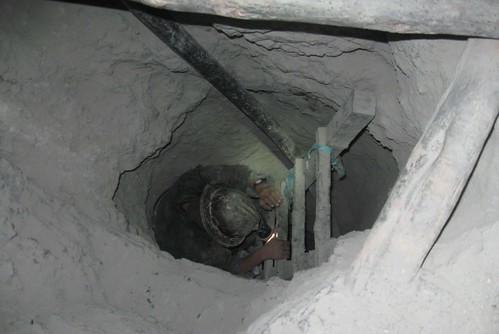
Despite all of this it was a great experience, although at times, after the exertion of crawling into a small space and not being able to breath clean air, it left me feeling
claustrophobic. If finding work is an issue when we finish travelling I think I can safely cross Miner off the list of possible jobs.
Sucre
Sucre is still the judicial but no longer the governmental capital of Bolivia. It has some spectacular colonial architecture from its days as the capital.
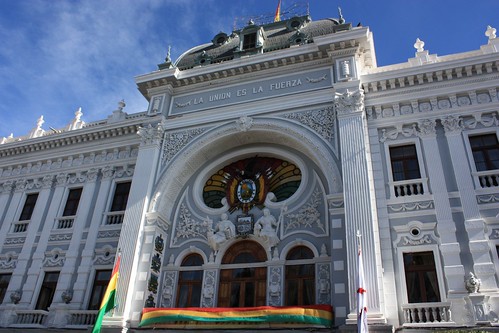
It also has a huge market where we bought practically every meal of the day, from the fruit salads and saltenas for breakfast, to the chorizo sandwiches for lunch, to the
variety of fry-up meals you can buy for 10 BOB for dinner, mixed in with a good amount of fruit shakes.
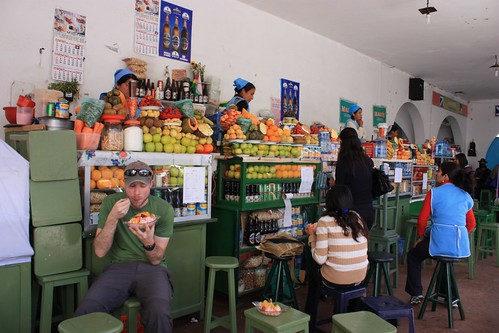
In Sucre we decided to learn more Spanish. We signed up at Fox Language Academy and were assigned Bertha as a teacher and we couldn’t
have asked for a better profesora. She even gave us a cooking lesson where we learnt to cook the traditional Picante de Pollo (Spicy Chicken)
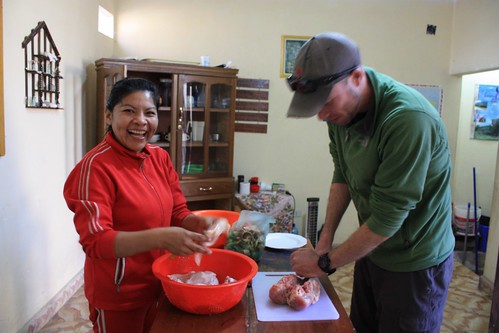
Fox is a non profit organisation and they use the money from Spanish lessons to subsidise English lessons for locals. We signed up to be volunteers to help
out the local teachers with their English classes in the evenings. We were assigned to different teachers and at the beginning of the first lesson my teacher Jamile, asked the class for an example of a compound noun. Cue blank
faces from all the students, at which point she turns to me for an example, I think I maybe on the wrong side of the classroom! After she gave the definition I was able to come up with bus station, I think I learnt English
as much as I did Spanish!
We certainly got better at teaching, so much so that Jo and I were asked to cover a class on our own. As you can probably imagine a group of 10-14 year old Bolivians ran us
absolutely ragged for an hour! In the lesson one of the girls asked me a question I didn’t understand and I made the mistake of saying ‘Si’. Only to realise in horror that she had asked my permission to hit a boy at
the back of the classroom, and I had given it!
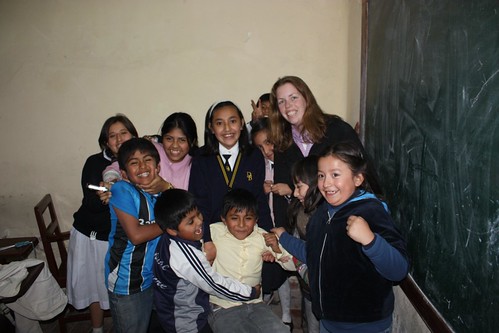
I also had another lucky escape when Bertha also asked us both to help out with some of her English lessons as she was having trouble translating pop songs. I managed to develop
a dodgy stomach that made me miss the lesson where Jo had to translate and sing My Heart Will Go On by Celine Dion! Lucky escape!
We also got to learn of the tensions between Sucre and La Paz as during our last days there were huge demonstrations in the town against the newly appointed Mayor by officials
in the Capital. Apparently it’s not considered a real protest in Bolivia unless there are tear gas, rubber bullets and burning tyres involved!
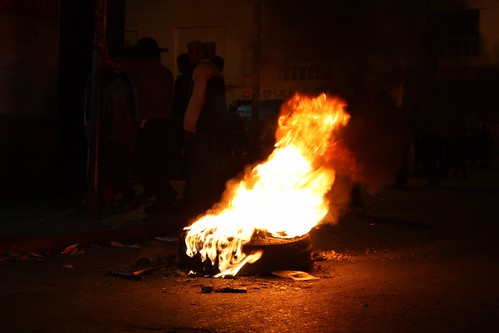
We only planned to spend 2 weeks but after nearly a month we finally had to say goodbye to our students and get back on the road. Of all the highs we have experienced in Bolivia,
so far the best have been in Sucre due to the students and the hospitality we experienced from the school and all the teachers there. It was nice to call somewhere home for a while and get to know Sucre properly, and to watch
a few games from the Copa de Mundial too!
Until next time
Ryan & Jo
Flickr - http://www.flickr.com/photos/dojo77/